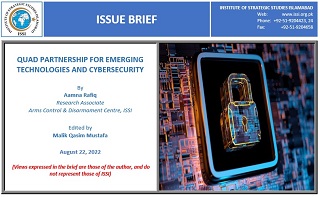“In our first year of cooperation, we established the Quad’s dedication to a positive and practical agenda; in our second year, we are committed to deliver on this promise, making the region more resilient for the 21st century,”[1] said the Joint Statement of the second in-person meeting of Quad leaders. In addition to global health security, climate, and infrastructure, the most prominent elements of Quad’s ‘practical agenda’ includes cybersecurity, critical and emerging technologies. What promises these Quad leaders have made in the realm of emerging technologies and cybersecurity? How would they deliver these promises? What are the core objectives the Quad leaders are aiming to achieve?
In the joint statement,[2] the Quad leadership recognised the need to adopt a collective approach to enhance cybersecurity in agreement with the Quad’s broader vision of an open and free Indo-Pacific. They expressed their commitment to defend their critical national infrastructure (led by Australia) by timely exchange of threat information among their national Computer Emergency Response Teams (CERT), identification and evaluation of possible risks in the global supply chains of digitally enabled services and products (led by India). In addition to ensuring software and Managed Service Provider (MSP) security for government procurement through aligning the foundational principles and cybersecurity standards (led by the US), they also agreed to utilise their collective purchasing power to enhance the broader software development ecosystem. With respect to the issue of capacity building (led by Japan), the Quad members reached an agreement to coordinate and build programmes under the Quad Cybersecurity Partnership: Joint Principles[3] in the Indo-Pacific region. They will also initiate the first-ever Quad Cybersecurity Day to enhance the awareness in the most vulnerable sectors of the region for maintaining good cyber hygiene and protection from cyber threats.
















